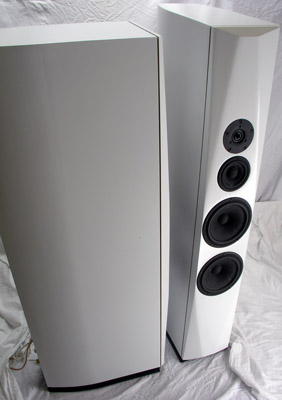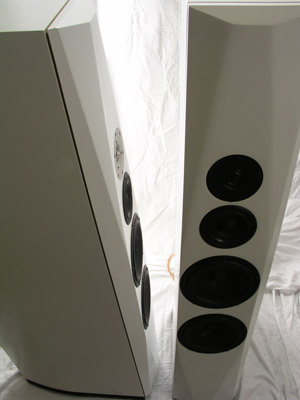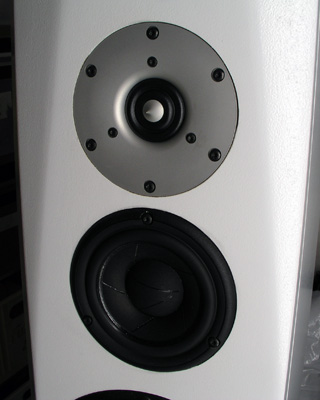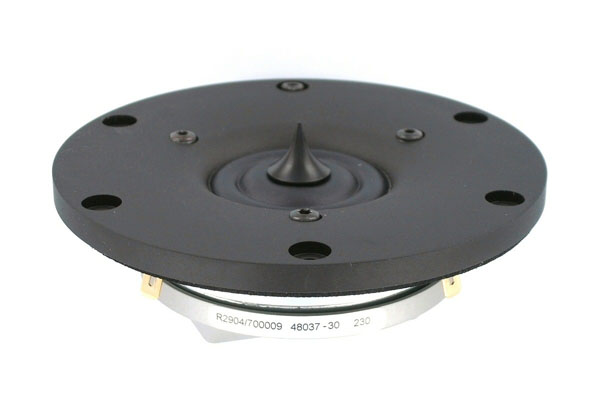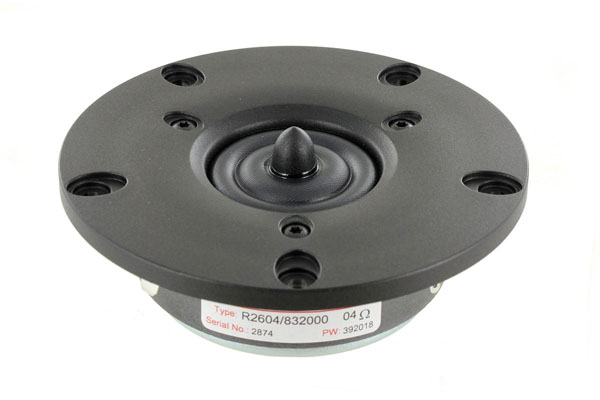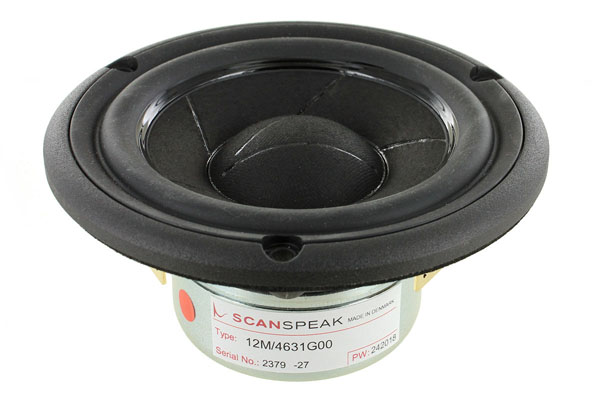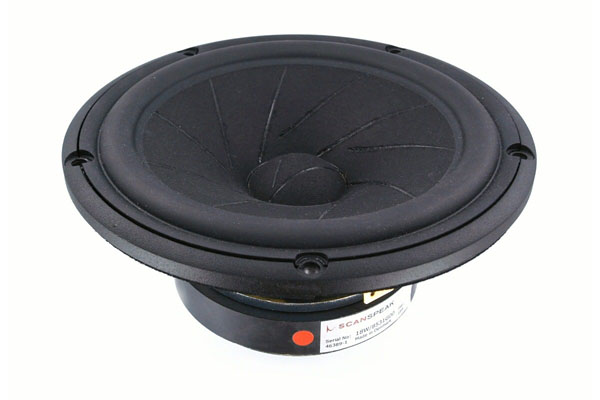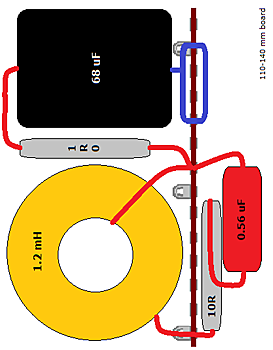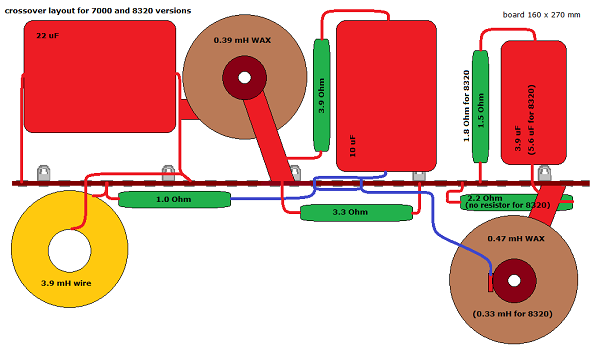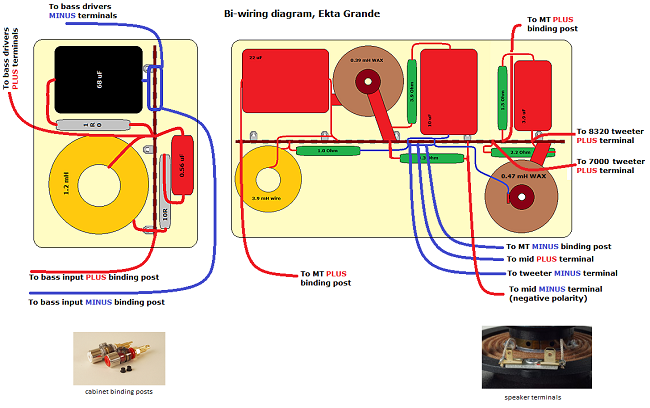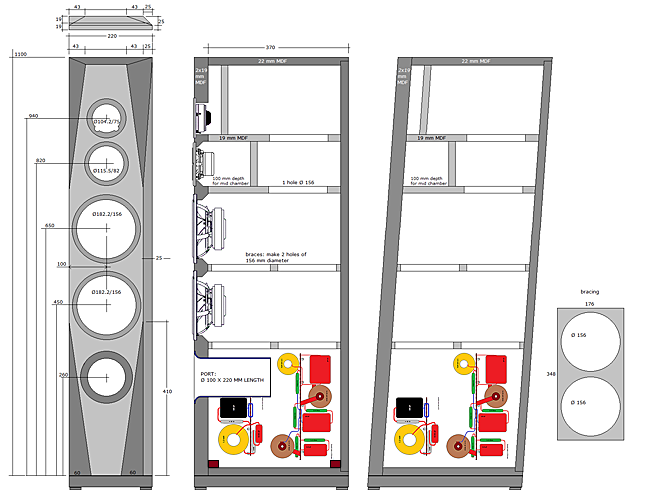DIY Loudspeakers: HOME INDEX UPDATES RESPONSE WHAT'S NEW
Ekta Grande
Copyright 2014-2022 © Troels Gravesen
Go To:
CROSSOVER
DRIVERS
CABINETS
MEASUREMENTS
Feb. 2013:
Ekta Grande started in 2007 and has maintained a steady interest among
builders - and for good reasons. These Revelator drivers are among the
most diy-friendly drivers ever made. Smooth frequency response from
appropriate front panels allow simple crossovers and excellent sound.
The 18WU Illuminator drivers may provide increased dynamic headroom
compared to Revelator, but comes at extra cost, more than 100 € per
driver. A significant increase when we're dealing with four drivers. And
Illuminator drivers would take a new crossover, so don't use this design
with Illuminator drivers!
The 12M middriver is a darling and an example of excellent performance
and delicate industrial design. I don't think it can be done better. The
R2904/700009 tweeter is not exactly cheap and you may start out with the
R2604/832000 tweeter if budget is tight.
The up-dated version offers
simpler cabinet construction compared to the curved side
panels of the original. Front panel width has been increased
by 3 mm and overall height reduced by 100 mm. The 120 cm
height of the original was the most common regret by
builders.
The two ports of the former version and their placement were
not ideal as the upper port had to be above the mid cab
causing some obstruction in air flow, thus one port of 100
mm diameter and 200 mm length, which can be added to the
front or rear.
The cabinet net volume is 65 liters minus bracing and mid
cabinet so we end in the range of a little above 60 liter.
Port dimensions provide a port tuning (Fp) of 33 Hz.
The upright drawing seen
below
is meant for those you may prefer to build a straight
rectangular cabinet and tilt the cabinet by adding different
length spikes to the front and rear of base plate. My
preference is the right hand drawing where a 5 deg. tilt is
built into the structure.
The crossover
is exactly the same as before and two tweeter options will
be given, no more, so please do not ask for other tweeters.
The R2904/700000 and R2604/832000 are so alike that only
minor changes to the crossover is needed and the exceptional
linear response from both tweeters on this baffle allows
very simple crossovers.
Initially a 3½-way crossover, quite similar to the Ekta, was
constructed. 4th order to the tweeter and the lower bass
working like a semi-sub. This made an even more heavy
low-end and all in all it sounded quite nice. Flat response
and a balanced presentation of all kinds of music. Playing
around with the LspCAD and looking at the almost ideal
response of all drivers, the idea of making a minimal
crossover was obvious. SPL of individual drivers seen below.
Making a minimal crossover would also allow the use of some
of the best components available.
2013: I think this choice was right as few builders not
having the option of decent out-on-the-floor placement have
had problems with excessive bass.
The crossover is 4 coils, 5 caps and 6-7 resistors, depending on whether the 7000 or the 8320 tweeter is used. I like the 8320 version a lot. Really can't tell you why, but difference in the coating of the two diaphragms may be the reason. The 7000 has a thinner coating, probably providing some of the extra sensitivity and probably reaching a bit higher in frequency response. The 8320 has a slightly "darker" presentation compared to the 7000 and despite the two versions being tuned to render the same frequency response +/- 0.5 dB. The rise in impedance at Fs is much higher for the 7000, thus my guess on a thinner coating.
http://www.troelsgravesen.dk/tips.htm
http://www.troelsgravesen.dk/tips.htm#CONSTRUCTION_OF_CROSSOVERS
http://www.troelsgravesen.dk/crossovers.htm
http://www.troelsgravesen.dk/LCR-RC.htm
http://www.troelsgravesen.dk/Inverted-Polarity.htm
http://www.troelsgravesen.dk/choices.htm
http://www.troelsgravesen.dk/power-handling.htm

Tweeter attenuation: My default R1011 is 1R5.
If you want more try 1R0 or 0R47.

Tweeter attenuation: My default R1011 is 1R8. If you want more try 1R0 or.
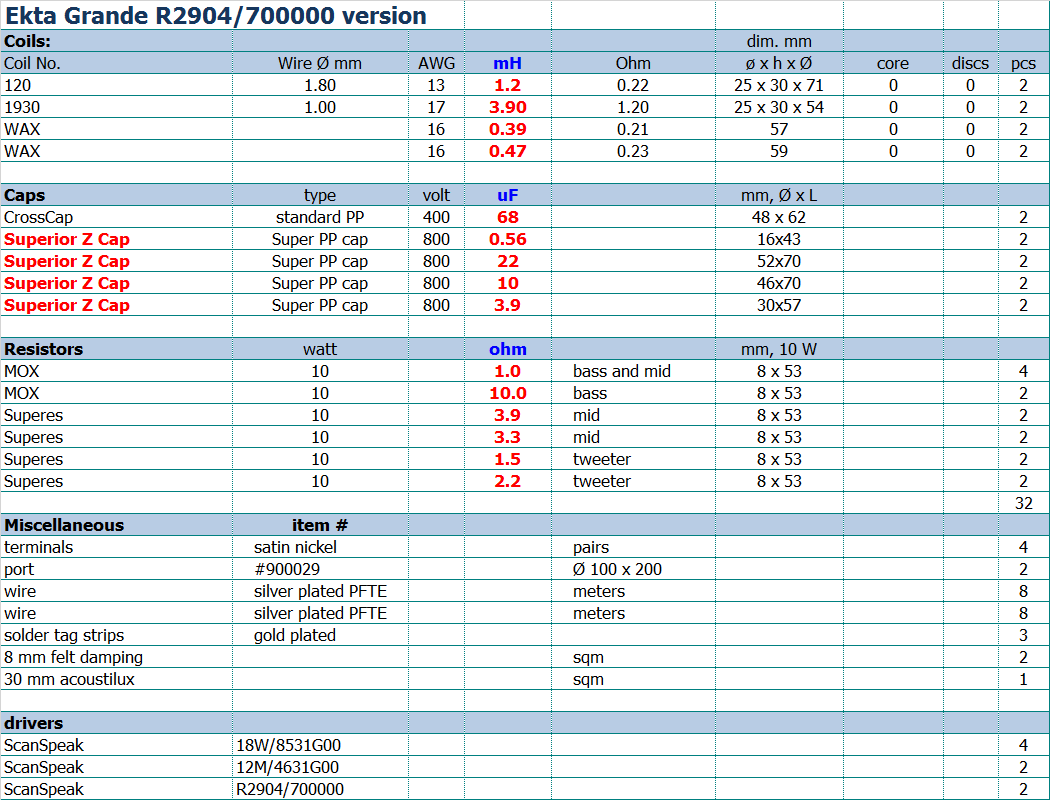
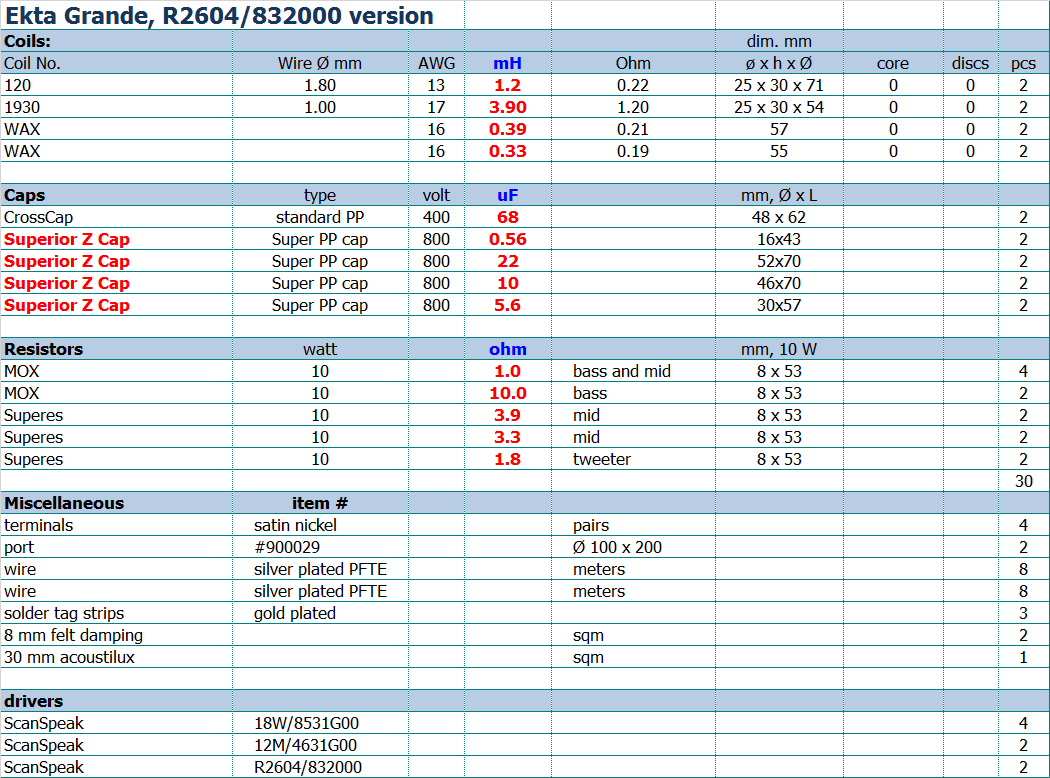
Complete crossover kits with/without drivers available from Jantzen Audio:
contact@jantzen-audio.com
(copy parts list above and attach to mail to
Jantzen Audio)
Download kit sales presentations:

Technical questions to me at: troels.gravesen@hotmail.com
Crossover Layout
BACK TO INDEX
Check this out before start making crossovers:
http://www.troelsgravesen.dk/tips.htm#CONSTRUCTION_OF_CROSSOVERS
Crossover layout for bass (left) and mid-tweeter (right). This for the
7000 version.
If 8320 is used, leave out tweeter 1.5 ohm
and replace 2R2 with 1.8 ohm. Also replace 3.9 uF with 5.6 uF.
Don't forget to mirror the front panels!
Use 22 mm MDF for sides, top and rear panel, 19 mm MDF for bracing and 2 x 16 mm MDF laminated for front. Do not forget to chamfer driver holes for 18W and 12M drivers, in particular the 12M needs a lot of space for breathing freely. Check this page.
Bass cabinet volume is 65 litres and with a vent tuning of 32 Hz we need a port of Ø100 x 200 mm.
The upright drawing seen above is meant for those you may prefer to build a straight rectangular cabinet and tilt the cabinet by adding different length spikes to the front and rear of base plate. My preference is the right hand drawing where a 5 deg. tilt is built into the structure.
I suggest starting with the front panels and mark the placement of bracing according to drawing. This is not critical and no exact dimensions will be given as this may vary a little depending on materials used. I suggest 19 mm MDF for bracing.
I suggest adding fillets at the bottom of the cabinet to fasten bottom panel and get access to interior for mounting the crossover.
Damping of cabinet:
Use 8 mm felt material and 30 mm polyester foam (Acoustilux).
Add felt to all internal panels incl. mid cab except front
panel and bracings. Add four layers of 30 mm Acoustilux to
the bottom of cabinet and two layers to top.
Place two layers of Acoustilux behind 18W drivers and behind
12M middriver.
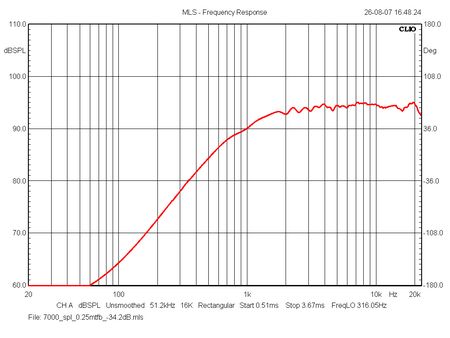
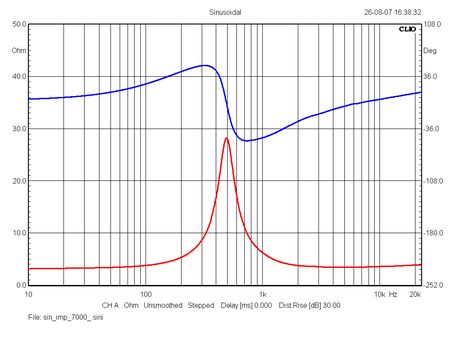
Left:
D2904/7000 tweeter response on Ekta-G baffle. It doesn't get
much better than this.
Right: Impedance of R2904/700000 tweeter. The high peak
indicates less mechanical damping compared to R2604/832000
tweeter.
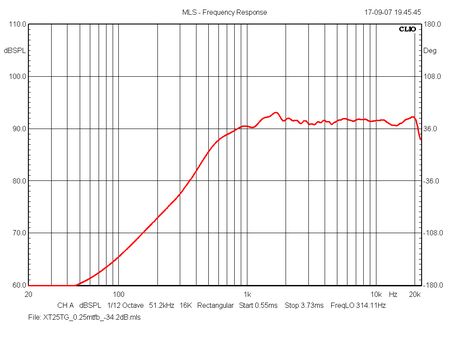
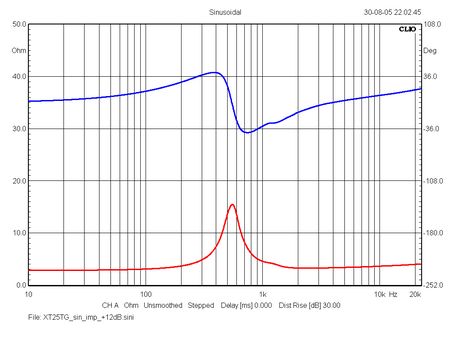
Left:
R2604/832000 tweeter response on Ekta-G baffle. Flat as can
be.
Right: Impedance of R2604/832000 tweeter.
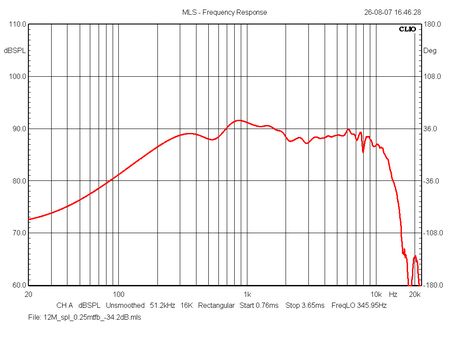
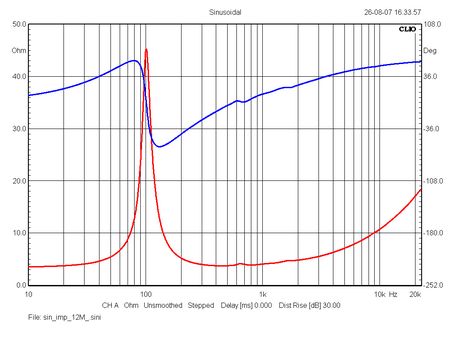
Left:
12M/4631G00 response on Ekta-G baffle. Minor bump at 800-900
Hz and minor dip at 550 Hz.
Right: Impedance of 12M/4631G00 middriver. The 12M has a
remarkable high resonance peak, indicating high Qm, and so
it has; 5.57 according to SS claims.
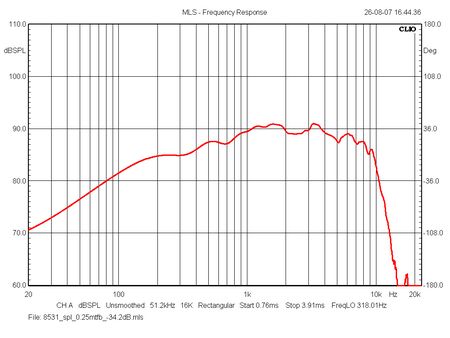
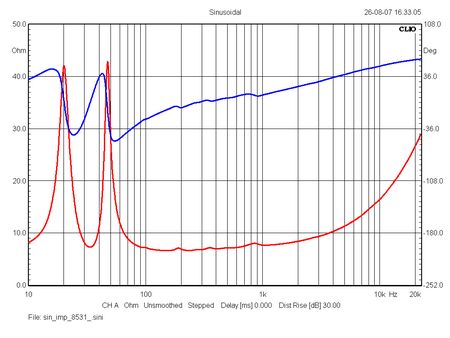
Left: Response
of one 18W/8531G00 on Ekta-G baffle. Remarkably extended and
a smooth decay. Very few 6½" driver can manage this.
Right: Impedance of 18W/8531 driver (one) in cabinet.
The final systems
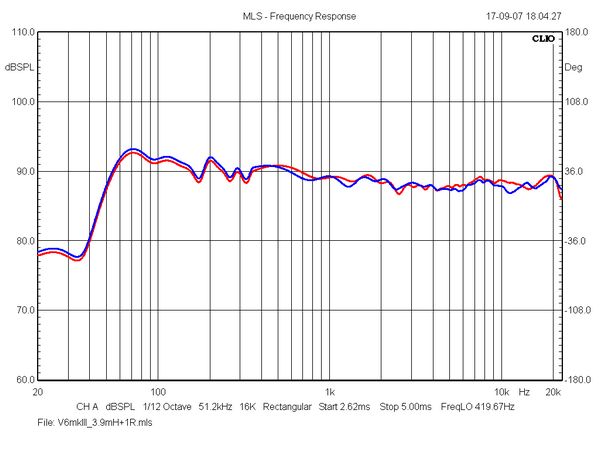
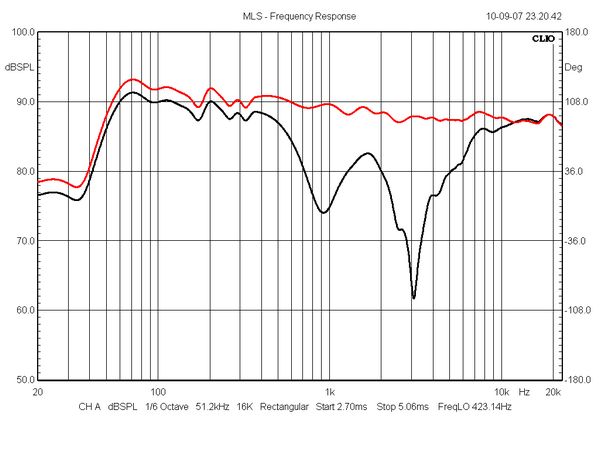
Left: SPL response
of 7000 and 8320 versions. 2.8 V @ 1 metre distance.
Response is merged with bass nearfield response at 350 Hz.
Right: 7000 version
with mid connected with same polarity. Response taken at
between-mid-and-tweeter height a 1 metre distance. Points of
crossover are 900 and 3200 Hz.
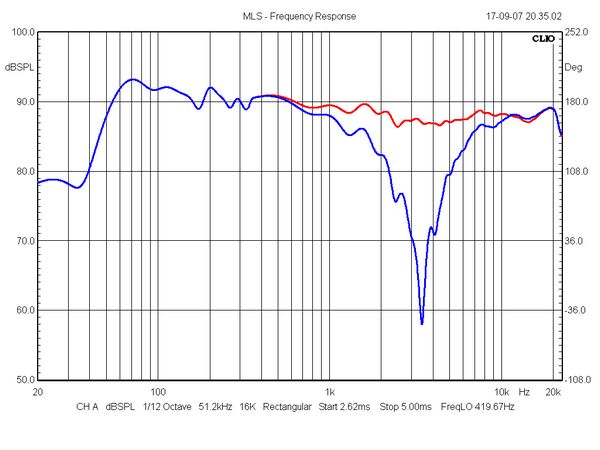
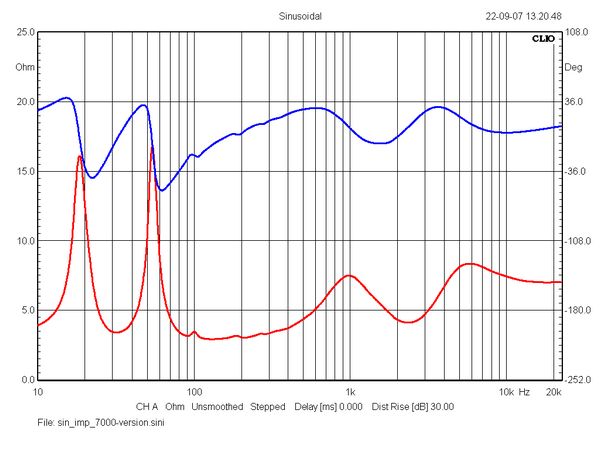
Left:
Connecting
R2604/832000 tweeter with negative polarity displays a deep
suck-out at ~3.5 kHz = point of crossover.
Right: Impedance of
complete system with 7000 tweeter. As can been seen we reach
an impedance of 3 ohms from running two 18W bass drivers in
parallel.
The minor peaks in impedance around 100-300 Hz strongly
suggest you place some more damping material at bottom and
top of cabinet.
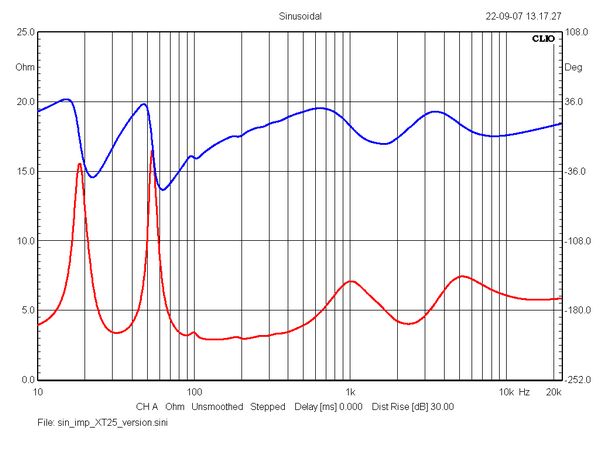
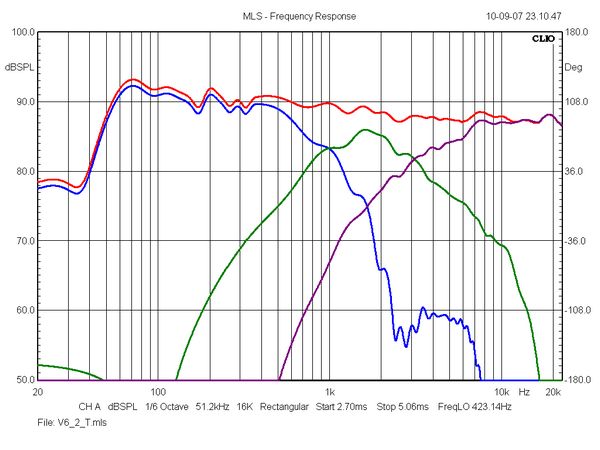
Left:
Impedance of
system with 8320 tweeter. Not much difference from 7000
version. Wasn't expected either.
Right:
SPL of drivers
@ 1 meter/2.8 volts, driven from crossover, plus summed
response merged with nearfield response at 350 Hz.
